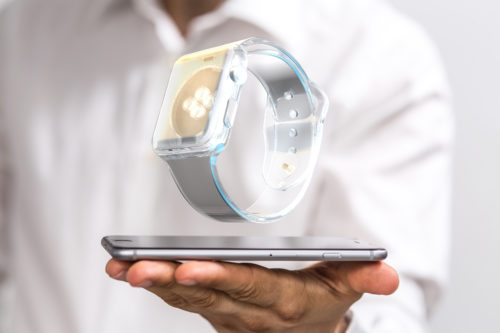What Are Rigid-Flex PCBs?
A rigid-flex printed circuit board (PCB) is a printed circuit board made with rigid and flexible substrates. The resulting component combines aspects of hardboards and flexible circuits, with some rigid sections and some flexible sections. This unique design provides support to the areas that need it and enables flexing or folding in the areas that require it.
Benefits of Rigid-Flex PCBs
There are many benefits to using rigid-flex PCBs over other PCB options. For example:
- Better space utilization. They allow for better utilization of space in all three dimensions.
- Greater durability. They survive high levels of shock and vibration as well as hundreds of thousands of flex cycles.
- Higher signal transmission reliability. They are less likely to have issues transmitting inputs.
- Lower part weight/space requirements. They can be smaller and lighter than other PCBs.
- Broader functionality. They can be designed for use in a wide range of industries and applications.
How to Choose the Best Rigid-Flex PCB for Your Application
Ensuring your rigid-flex PCB solution fully meets your unique needs necessitates a careful assessment of the options available during the initial design phase. There are three main types of rigid-flex PCBs, each of which has distinct characteristics that make it suitable for different applications.
- Single-sided. These are the simplest rigid-flex PCBs. They are made by sandwiching one layer of copper between two insulating layers. They are typically used for basic point-to-point wiring applications.
- Double-sided. These rigid-flex PCBs are designed for more complex point-to-point wiring applications. They are made by sandwiching one layer of insulation between two layers of copper.
- Multi-layered. These rigid-flex PCBs are used in highly sophisticated devices and systems. They have multiple copper layers with an insulation layer between each of them.
Common Applications
Applications for rigid-flex PCBs can be classified into two broad types:
- Flex-to-Install. In these applications, the rigid-flex PCB is only flexed/folded when it is installed into an assembly or device. For the rest of its lifespan, it remains relatively stable and unmoving except for subtle movement caused by vibrations.
- Dynamic-Flex. In these applications, the rigid-flex PCB is frequently bent and unbent. It is vital that the flexible portion of the board is durable enough to withstand these numerous flex cycles.
 Both flex-to-install and dynamic-flex applications are found in virtually every industry. Examples of typical uses for rigid-flex PCBs include:
Both flex-to-install and dynamic-flex applications are found in virtually every industry. Examples of typical uses for rigid-flex PCBs include:
- Aircraft devices and systems
- Automobiles
- Cellphones
- Solar and other green energy systems
- Internet of Things (IoT) devices
- Medical devices
- Military devices and systems
- Tools
- Wearable technology
Redstar Worldwide, Your Trusted PCB Supplier
Want to learn more about rigid-flex printed circuit boards? Ask the experts at Redstar Worldwide. As an experienced supplier of rigid-flex PCB solutions, we can answer and address any questions or concerns you may have about these components. Additionally, if you decide rigid-flex PCBs are right for your needs, we have the knowledge and skills to help you with everything from finalizing your design to compiling documentation for the manufacturer so you can successfully bring your product to market. Request a quote to start your order.

